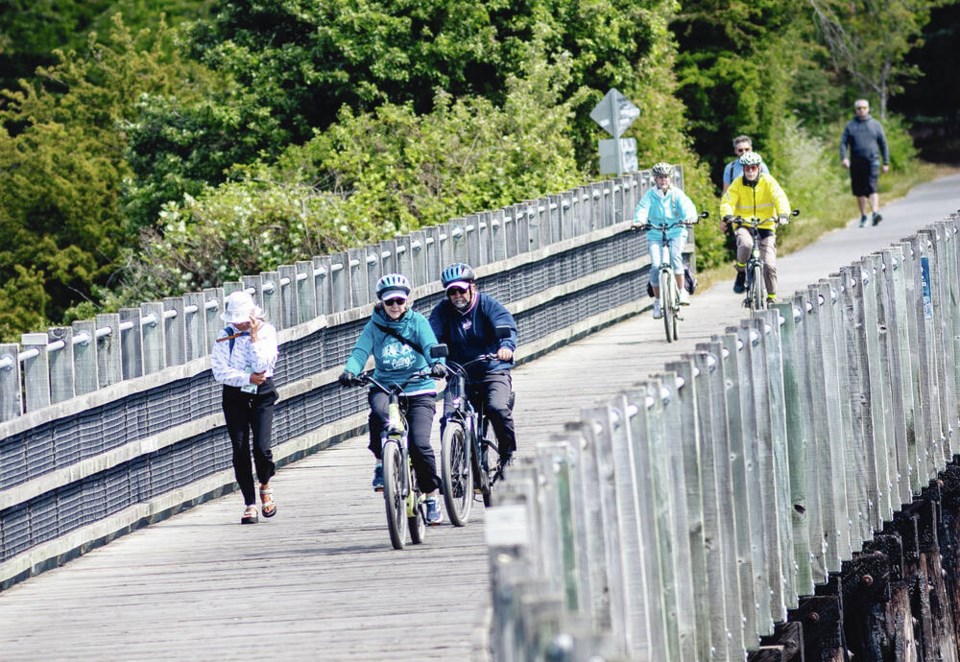A commentary by a Victoria resident.
As a lifelong cyclist, environmental scientist and more recently cycling skills instructor, I am a strong supporter of improved cycling infrastructure, but I find myself questioning some decisions in recent years, which have generated a strong backlash on these pages.
Four recent letters illustrate my concerns.
• A July 31 letter calls for a smoother surface on the Selkirk Trestle. This has been a need for at least 20 years — on an artery that serves thousands of cyclists a day.
The Swan Lake Trestle was resurfaced with smooth sheets with a textured surface for traction. This will improve life for cyclists and have no impact on motorists. Let’s get it done!
• Two Aug. 1 letters call for better management of interactions with faster moving users — particularly e-bikes — whether by banning them from trails or managing through speed limits, policing and awareness.
E-bikes are coming at a faster rate every day. This will also improve life for cyclists and pedestrians with no impact on motorists. Let’s figure it out!
• Chris Foord’s Aug. 1 letter criticizes the Richardson cycling corridor.
To fully appreciate his point of view, you need to know that he is a lifelong cyclist, a transit manager, and one of the architects of bike racks on Greater Victoria buses, as well as being a former Bike to Work board member.
His feeling that this is poorly planned infrastructure was shared by all in attendance at a recent gathering of environmental professionals — all of whom are cyclists.
As with most cyclists, they are also motorists sometimes.
Supporting better cycling infrastructure for social and environmental reasons should not prevent us from also reviewing and reconsidering our decisions.
• In the case of the Galloping Goose, its success as a major transportation corridor warrants increased investment and management, but there are things that need doing now and shouldn’t wait for planned upgrades.
• In the case of the Fort and Pandora two-way cycle tracks, it may be time for a review of whether they might function better one-way with the flow of traffic.
With increased use by cargo bikes and trailers, passing on the two-way track can be dangerous. Converting to one-way would simplify the signalization at intersections — easier and safer for bikes and cars.
I suggest that we need more discussion across a broad range of views, and less polarization between cycling advocates and motorists.



